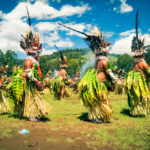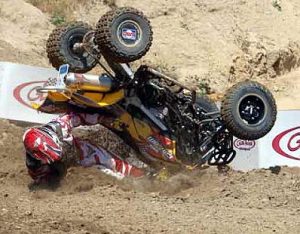One of the last frontiers is an expression that couldn’t be closer to the truth where Papua New Guinea is concerned. Whether culture or nature excites you, this is one of the most untouched and diverse lands on earth and in reality is not at all difficult to visit. With so much to see it’s hard to believe Papua New Guinea is one of the least visited countries on earth.
Papua New Guinea is in the South Pacific and lies directly north of Australia. Two beautiful and mysterious new island province lies to the northeast of mainland Papua New Guinea. New Ireland is the narrow island north of New Britain and the province also includes several islands of the Northwest end the largest being New Hanover. To the east lie a further string of islands including Lihir, one of the world’s largest gold mines.

New Ireland has perfect white sand beaches and rivers of clear water tumbling down from the ruggedly forested central onyx range. New Ireland is a beautiful, friendly, and easygoing place and although little known and rarely visited is easily accessible to those looking for that special once-in-a-lifetime adventure.
Kavieng is a sleepy little town with an attractive harbour and a variety of bars, restaurants, and facilities including supermarkets, supply stores, banks, supply stores, and places to stay include a hotel, guest stars, and resort-style accommodation while easygoing traditional style bungalows are situated among the islands offshore. From Kavieng, you can choose to head down the main coastal road of a new island or head out into the many beautiful islands offshore.
New Ireland known as the mainland by the locals is mountainous and riddled with huge flooded caves. Much of the east coast can be reached by the bull Minsky highway which runs most of its length. This coast comprises one breathtaking beach after another, traditional villages, and lagoons of surpassing beauty. Friendly guest house and bungalow-style accommodation are available at various points, providing an opportunity to experience traditional community life at a true grassroots level. You might even be lucky enough to join a traditional ceremonial feast. The remote west coast is also accessible by road with rugged rainforest and clad mountains falling steeply into the sea.
Midway down the island, the Papuan Plateau rises to over 1200 meters and is very different from the steamy coast. The vegetation comprises many fans and beautiful orchids and the climate is cool enough to grow vegetables that cannot be grown on the coast. Mountaintop guest house accommodation is available and is the perfect location from which to experience traditional highland plateau life.
The northwestern islands with the friendly people, wide sandy beaches, crystal-clear waters, pristine coral reef systems, and rolling surf are an unspoiled paradise – an incredible opportunity for discovery and adventure or just simple relaxation. Many of the palm-fringed islands contain picturesque villages and the largest island called New Hanover has spectacular river systems, waterfalls, and mountains.
These remote and beautiful island groups can be explored by boat and really are a journey back to ancient times. Comfortable guest house accommodations are available in some of the most idyllic locations imaginable or perhaps the adventure, freedom, and simplicity of a liveaboard yacht charter might appeal to you. Either way, visitors will experience a fascinating culture largely unchanged for thousands of years.
The new island province of Papua New Guinea is one of the world’s most timeless, diverse, and exciting discoveries of modern times. It’s safe it’s easily accessible, and it’s waiting for you.

